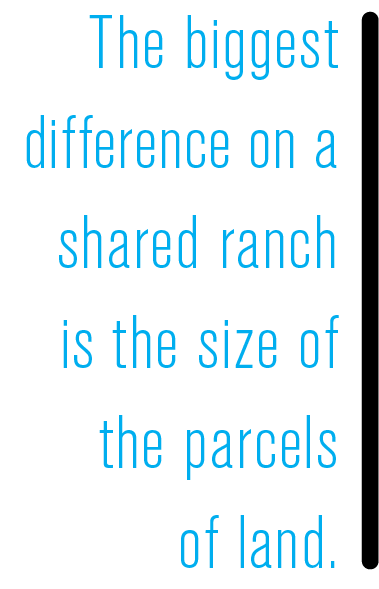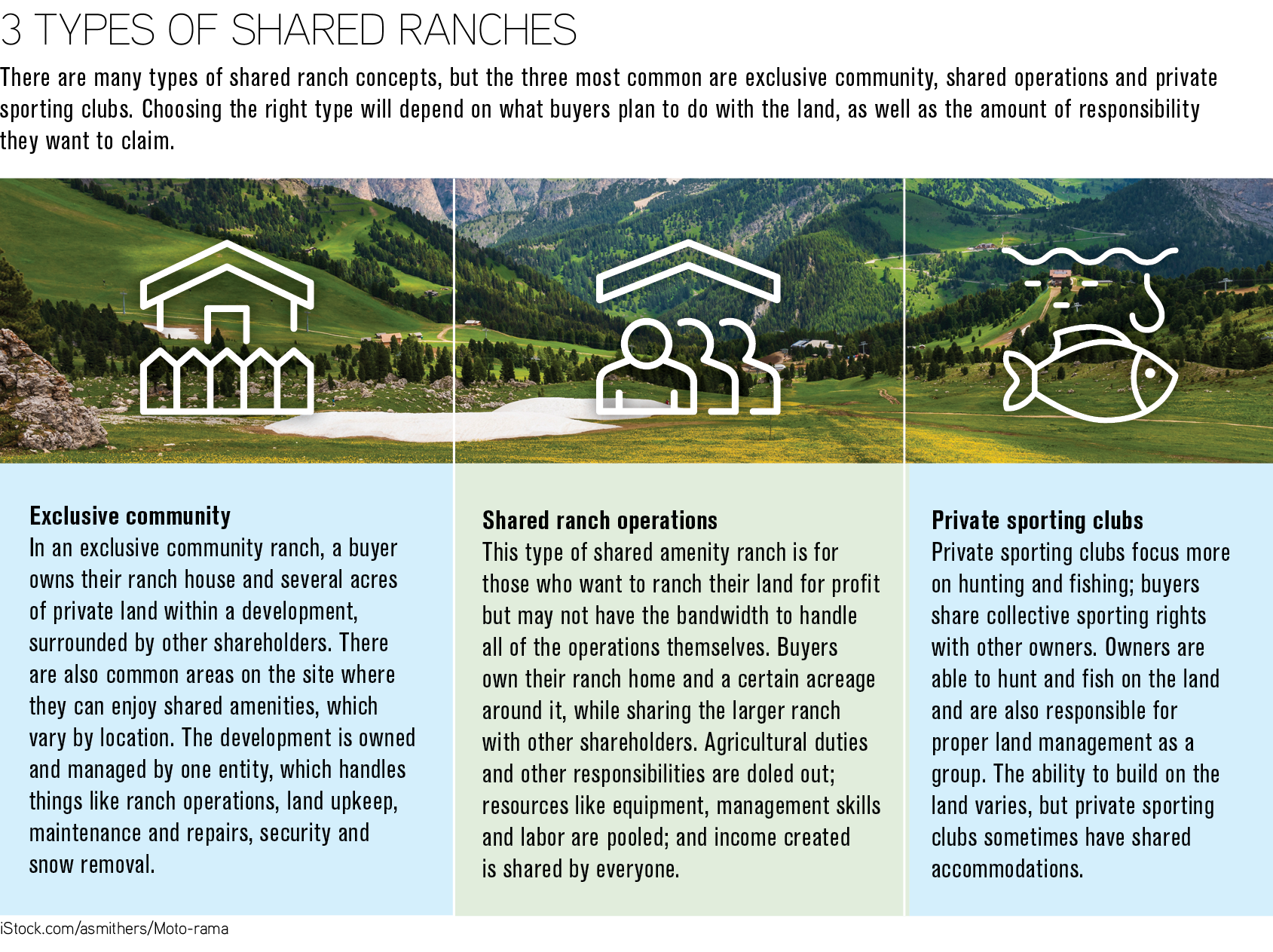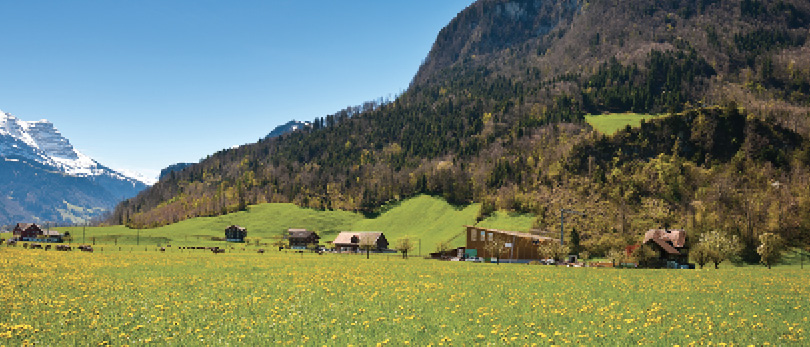A burgeoning market in the western U.S., shared ranches are a great option for buyers who are looking to settle down
By Megan Kramer
Many people saw their work and lifestyles change during the pandemic, and while some things will return to a new type of normal, other changes may be more long-term.
Guest Editor: Jen Ward, CRS
Changes in consumer lifestyles brought on by the pandemic and migration patterns created new trends in real estate. Some people could work remotely and choose where they live. If you work this niche, you are the go-to expert, and if you have a client hankering for ranch land, you can find referrals through the vast network of CRS designees. Staying on top of these trends can help you expand your knowledge as well as your business.
Those who are able to work remotely are cutting ties with their offices, moving from cities to suburbs or even to new states completely. Being at home more often also spurred homeowners to either renovate their homes or relocate somewhere with more space. Even as states open back up, many homeowners will still enjoy time at home.
“There is a demand for space,” says Tricia Tialdo, CRS, broker at Strano & Associates in southern Illinois. “People are reevaluating their needs for space and a home, [and] whether it be indoor space or outdoor space, people want privacy—they want to be separated.”
One trend certainly has caught the eyes of those who are looking for homes with room to breathe: shared amenity ranches.
Acres of one’s own
There are numerous types of shared ranch concepts, but the most popular is the exclusive community ranch. These ranches are similar to the kinds of shared communities you see in suburban areas, where members own their home and parcel of land, but share public spaces, amenities and neighborhood responsibilities. Just like with these suburban developments, exclusive community ranches are owned and managed by one entity, and ranch owners pay into something akin to a homeowner’s association (HOA) to fund the upkeep of shared land and amenities.
 The biggest difference on a shared ranch is the size of the parcels of land. Some developments offer hundreds of private acres for those who want optimal privacy, while others offer a more modest acreage. Buyers can purchase land with an existing home on it or purchase open land on which to build their dream home. Either way, there are opportunities to tailor the land and rooms in the home to fit their needs, which is the biggest appeal for buyers right now, says Tialdo.
The biggest difference on a shared ranch is the size of the parcels of land. Some developments offer hundreds of private acres for those who want optimal privacy, while others offer a more modest acreage. Buyers can purchase land with an existing home on it or purchase open land on which to build their dream home. Either way, there are opportunities to tailor the land and rooms in the home to fit their needs, which is the biggest appeal for buyers right now, says Tialdo.
“People are wanting rooms for work or virtual learning—those kind of dedicated spaces,” she says. “A lot of people also have made spaces now for fitness and recreation, whether it be a yoga studio or all of their exercise equipment in one room.
“There’s also interest in expansion of outdoor areas,” Tialdo continues, “so they can have room for the kids to play, to host some small gatherings or outdoor movie nights, or maybe put in a fire pit or outdoor kitchen.”
Whether buyers want five acres or 500, they’ll have the flexibility to do all of this and more. And each parcel of land has the infrastructure for water, electricity and internet, meaning owners can work from home in peace and quiet.

Meeting the neighbors
The pandemic brought on a strange dichotomy for many people. Feeling “stuck” at home made us want to go out while simultaneously connecting us more to our homes as safe spaces. Now, we want to feel comfortable at home but also desire ways to safely socialize. An exclusive community ranch addresses both of these needs by offering a multitude of shared amenities. These vary by location but can include a large communal building for dining experiences or gatherings, a main barn, equestrian facilities, guest cabins, hiking trails and shooting ranges.
While ranch owners can take part in these activities on their own, participating is also a chance for them to meet and bond with their neighbors—a type of human connection people have been craving since the start of the pandemic.
“When you share a space, you get to know your neighbor,” Tialdo says. “Especially if you use the shared facilities often, you see people and get to talking. I think sometimes in these areas, too, people tend to feel a sense of security, because everybody’s kind of watching out for each other.”
Choose your own adventure
The owner of a development usually provides a team to handle things like ranch operations, land upkeep, maintenance and repairs, security, individual ranch home inspections and snow removal, which is why exclusive community ranches are known as “ranch living without all the work.” Ranch owners can choose to be as high- or low-maintenance as they like on their own land. For example, some owners may want to keep horses rather than solely sharing equestrian facilities. It’s up to each person’s desired lifestyle, making shared ranches appealing to all walks of life, from younger professionals looking to relocate to baby boomers considering early retirement.
Whether a potential buyer is looking to get away from the hustle and bustle of their current location, wanting to connect more with nature or just wanting to go on a new adventure, moving West and buying a ranch may be the answer.
Home on the Range
For those who are looking to purchase a shared amenity ranch property, there are numerous options depending on how much they’re willing to spend and how much land they’d like to own. According to sale records from Mirr Ranch Group in Denver, prices of recently sold shared ranch properties in Colorado ranged from $725,000 to $3,570,000. Acreage for these properties ranged from 91 to 2,850.
Source: Mirr Ranch Group
New trends like shared ranches are always popping up in real estate. Stay in the know with the webinar, Navigating in Shifting Markets!, available on CRS.com/catalogsearch.
Photo: iStock.com/gkuna








